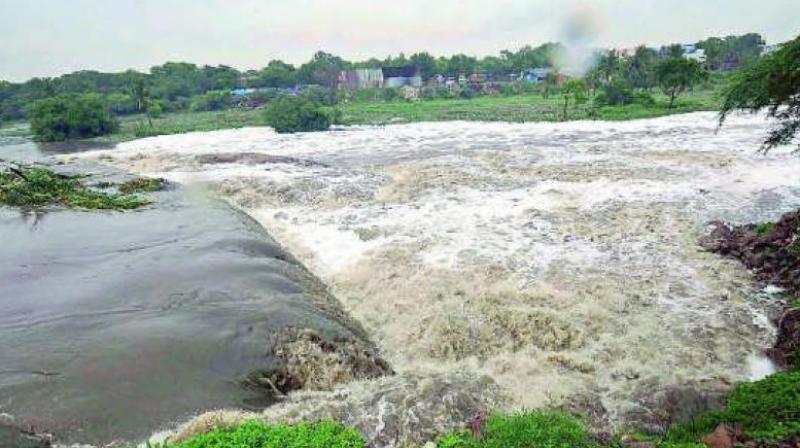Dip in Godavari river turns harmful
The study also showed that the presence of faecal matter and solid waste that found its way into the river after holy dips.

HYDERABAD: Visitors usually have a lot of entertainment at the Kumbh Mela. However, their dip in Godavari has been increasing the bacterial content in the river over 130 times. This was revealed by a study conducted by the National Centre for Cell Science in Pune and the researchers collected water samples from five points in Godavari, namely Gangadwar, Kushawart, Anandwalli, Gharpure Ghat and Tapocan in July and later in September 2015 after the mass bathing of devotees.
Avinash S., a researcher, said that the dissolved oxygen content in the river water had dipped and it was shocking to note that the bacterial communities that causes resistance to a lot of antibiotics that can adversely harm human health were present in the water samples"We also saw a decrease in the bacterial diversity, nearly 38 per cent which changes the water chemistry and gives way to more harmful bacteria."
The study also showed that the presence of faecal matter and solid waste that found its way into the river after holy dips. The study was conducted with samples from 2015 with the intent of getting a background into the problems associated with devotees dipping into the water and has called for a more detailed research at Prayag in Uttar Pradesh, during the 2019 Kumbh Mela.
Although many environmentalists have called for a ban on bathing in the already polluted Godavari, the suggestion met with disapproval from the devotees. Anmol Roy, an environmentalist, said that the water in Godavari is already polluted and is unfit to bath. “Despite repeated requests to the government to clean the same, it was not done. There is enough dumping of industrial effluents, hou-sehold sewage and every three years, the water has to bear a throng of people who pollute the water further.”
The health effects of swallowing this water will be painful leading to diarrhoea and other stomach ailments, according to health experts. Similarly people with sensitive skin will also be prone to skin allergies. A report was released by the Environmental Engineering Research in Mumbai that stated the river's biochemical oxygen demand was 30 particles per million while the standard was set at 5 per million.
